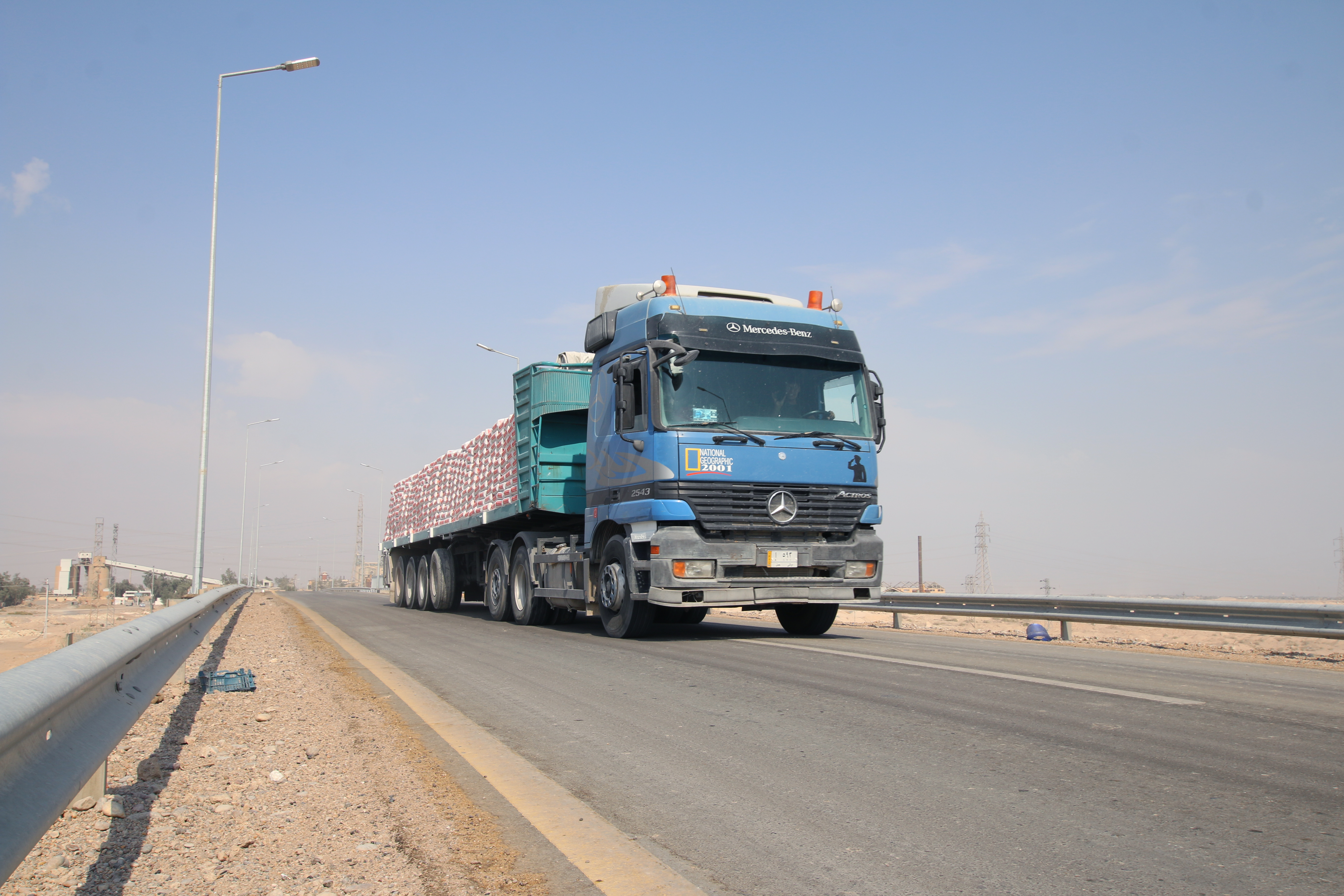How rebuilding a popular bridge in Falluja has helped relink a cement factory to the market.
Bridging Businesses
November 15, 2021
A truck carrying cement uses the newly rehabilitated Al-Shebabi bridge. Photo: UNDP Iraq
As you drive off the newly rehabilitated bridge towards Al-Shebabi, a sub-district within Anbar, you will be welcomed by factories lined up along both sides of the road. There are over 20 cement, gypsum, cement, tile, and brick factories based there. At first glance, it is clear that business is booming.
However, this was not always the case. “I have lived in Falluja all my life. During the liberation from Islamic State in Levant (ISIL), we were forced to shut down the factory and flee for our lives,” says Majid Al-Halbousi, 48, from Falluja. He manages investor relations at a cement factory based on one side of the bridge.
On returning in 2017, Majid was met with absolute devastation. Especially as he went back to work, the 62-acre factory he works at was left damaged. “In 2018, we were able to bring the business back up and running after rebuilding some of the equipment we lost. But transportation stayed a challenge as the main bridge connecting us to the market was not accessible,” he says. Adding to the daunting task of rebuilding the business, the Al-Shebabi bridge leading up to the factory was destroyed by ISIL.
The damage to the bridge severely affected the businesses in the area. It forced them to use alternate routes to transport products to the main market in Falluja’s city center. As Majid explains, “We produce over 2000 tons of cement daily. This needs to reach the market in time. The rerouting doubled our transportation costs and added unnecessary delays. It impacted our profit margins as we were unable to increase the cost of the products.”
It was also a challenge for staff to travel to and from the factories, as they had to take longer alternate routes. “Residents and staff suffered a great deal when the bridge was damaged. We had to find alternative routes by crossing the railway line close to the bridge. This also resulted in many unfortunate accidents,” says Majid. “For instance, we have over 150 people working at the factory. Almost all of them found it difficult to travel to work every day.”
Supporting the businesses and residents build back, UNDP rehabilitated the bridge with funding from the United States Agency for International Development (USAID). Today, this relinks over 9,000 residents living in and around the area.
Post rehabilitation, factories have been able to save on transportation costs and shorten delivery times. This has also improved connectivity between residents of Al-Shebabi and Falluja city to access the city’s health care, schools, and offices.
Today, the factory that Majid works at is booming with business. “Now, we produce 1.5 million tons of cement every year. Most importantly, my staff feel safer coming to work, and we can deliver our products on time. Thanks to USAID for their generous support,” he says with a smile.
About the programme:
The project was implemented through UNDP’s flagship programme, the Funding Facility for Stabilization (FFS), with generous support from USAID.
Since 2015, FFS has worked with the Government of Iraq and local actors to ensure safe, dignified, and voluntary returns and to lay the foundation for the successful reintegration of displaced populations into the community.
To date, as the largest donor to the Facility, USAID has supported 396 projects in Anbar, of which 78 projects are under implementation. This support to stabilization has benefitted over 1.8 million people, of which over 898,000 are women.

 Locations
Locations





